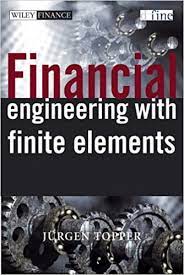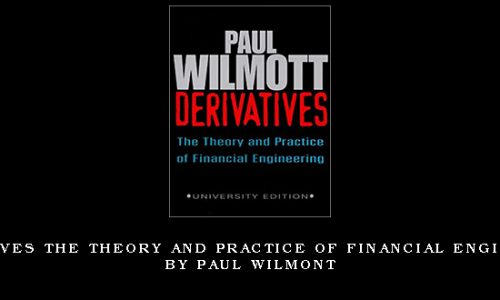
Financial Engineering with Finite Elements by Jurgen Topper
Description
The pricing of derivative instruments has always been a highly complex and time-consuming activity. Advances in technology, however, have enabled much quicker and more accurate pricing through mathematical rather than analytical models. In this book, the author bridges the divide between finance and mathematics by applying this proven mathematical technique to the financial markets. Utilising practical examples, the author systematically describes the processes involved in a manner accessible to those without a deep understanding of mathematics.
Explains little understood techniques that will assist in the accurate more speedy pricing of options
Centres on the practical application of these useful techniques
Offers a detailed and comprehensive account of the methods involved and is the first to explore the application of these particular techniques to the financial markets
Table of Contents
Preface.
List of Symbols.
PART I: PRELIMINARIES.
- Introduction.
- Some Prototype Models.
2.1 Optimal Price Policy of a Monopolist.
2.2 The Black-Scholes Option Pricing Model.
2.3 Pricing American Options.
2.4 Multi-Asset Options with Stochastic Correlation.
2.5 The Steady-State Distribution of the Vasicek Interest Rate Process.
2.6 Notes.
- The Conventional Approach: Finite Differences.
3.1 General Considerations for Numerical Computations.
3.2 Ordinary Initial-Value-Problems.
3.3 Ordinary Two-Point Boundary-Value-Problems.
3.4 Initial-Boundary-Value-Problems.
3.5 Notes.
PART II: FINITE ELEMENTS.
- Static 1D Problems.
4.1 Basic Features of Finite Element Methods.
4.2 The Method of Weighted Residuals – One Element Solutions.
4.3 The Ritz Variational Method.
4.4 The Method of Weighted Residuals – a More General View.
4.5 Multi-Element Solutions.
4.6 Case Studies.
4.7 Convergence.
4.8 Notes.
- Dynamic 1D Problems.
5.1 Derivation of Element Equations.
5.2 Case Studies.
- Static 2D Problems.
6.1 Introduction and Overview.
6.2 Construction of a Mesh .
6.3 The Galerkin Method.
6.4 Case Studies.
6.5 Notes.
- Dynamic 2D Problems.
7.1 Derivation of Element Equations.
7.2 Case Studies.
- Static 3D Problems.
8.1 Derivation of Element Equations: The Collocation Method.
8.2 Case Studies.
8.3 Notes.
- Dynamic 3D Problems.
9.1 Derivation of Element Equations: The Collocation Method.
9.2 Case Studies.
- Nonlinear Problems.
10.1 Introduction.
10.2 Case Studies.
10.3 Notes.
PART III: OUTLOOK.
- Future Directions of Research .
PART IV: APPENDICES.
A: Some Useful Results from Analysis.
A.1 Important Theorems from Calculus.
A.2 Basic Numerical Tools.
A.3 Differential Equations.
A.4 Calculus of Variations.
B: Some Useful Results from Stochastics.
B.1 Some Important Distributions.
B.2 Some Important Processes.
B.3 Results.
B.4 Notes.
C: Some Useful Results from Linear Algebra.
C.1 Some Basic Facts.
C.2 Errors and Norms.
C.3 Ill-Conditioning.
C.4 Solving Linear Algebraic Systems.
C.5 Notes.
D: A Quick Introduction to PDE2D.
References.
Index .
Author Information
JÜRGEN TOPPER is a Manager of d-fine GmbH, Frankfurt, a company that specialises in financial and commodity risk consulting. Prior to this, he worked for the financial risk management consulting division of Arthur Andersen since 1997.
Also Get Financial Engineering with Finite Elements by Jurgen Topper on Traderknow.com
Visit more course: FINANCIAL DEVELOPMENT
The same course: M.Rusydi Marc Yor Rene M.Stulz Robert Cinnamon Srdjan Stojanovic Stephen G.Ryan Steve Dalton . Sumru Altug Suresh Sundaresan Thomas Fitch Tom Taulli Lidiya K Tom Taulli Peter Dunkart. Jo Dunning Brendon Burchard Bob Bly Alex Becker Alan Weiss Talmadge Harper .
Available at traderknow.com
Please contact email: [email protected] If you have any question.
Course Features
- Lectures 0
- Quizzes 0
- Duration 50 hours
- Skill level All levels
- Language English
- Students 86
- Assessments Yes





